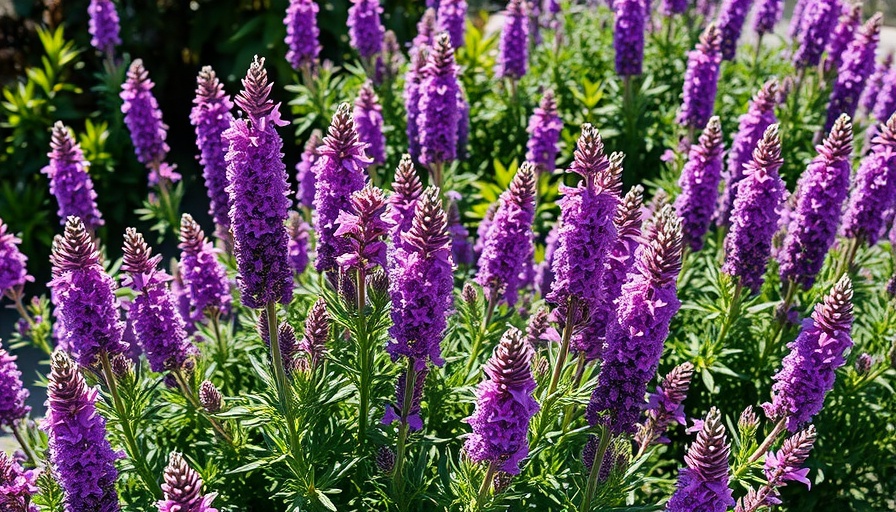
The Allure of Texas Sage: A Native Gem
Texas sage, scientifically known as Leucophyllum frutescens, might not be your typical garden sage, but it's a resilient and stunning shrub that brings vibrant life to arid landscapes. Often referred to as the "barometer bush," this evergreen plant thrives in the hot, dry conditions of Texas and northern Mexico, making it a favorite among gardeners looking to create sustainable, low-maintenance landscapes.
Adepting Your Landscape with Easy-Care Plants
As water conservation becomes essential in gardening, Texas sage perfectly fits the trend of xeriscaping, focusing on water-efficient plants that require minimal irrigation. This hardy shrub typically reaches a height of five to eight feet and a width of four to six feet, making it an excellent choice for informal hedges or as a standout focal point in your garden. With its striking purple blooms, especially prominent before rain, Texas sage adds a unique aesthetic appeal that can enhance any outdoor living space.
Understanding Its Unique Biological Features
The plant’s leaves, covered in fine trichomes, not only contribute to its silvery appearance but also assist in moisture retention, allowing it to endure in arid habitats. Blooming year-round in warmer climates and from spring to fall in cooler areas, the Texas sage is adaptable and resilient. These characteristics make it an ideal pick for gardeners eager to maintain a thriving green space with minimal effort.
Practical Tips for Growing Texas Sage
- Soil and Exposure: Texas sage flourishes in loose, sandy, well-draining soil with a pH of 6.0 to 8.4. Ensure it gets ample sunlight by planting it in full sun areas.
- Watering: After establishment, this shrub requires very little supplemental water. It is perfect for regions experiencing water scarcity.
- Pruning: Regular pruning can help maintain its shape and promote healthier blooms, making it an easy care shrub for garden enthusiasts.
Choosing the Right Cultivars
While L. frutescens is the most recognized species, several cultivars are available, each offering slight variations in size, flower color, and foliage. Some popular choices include the compact 'Little Joey' and the strikingly colorful 'Green Cloud.' Choose a variety that best suits your garden’s aesthetic and maintenance capabilities.
Guarding Against Threats: Pests and Diseases
Although Texas sage is generally resistant to most pests, it can occasionally be affected by aphids or spider mites. Keeping an eye on your plants and applying organic pesticides can effectively manage these challenges without harming the environment.
Creating Pollinator-Friendly Spaces
Integrating Texas sage into your garden is also beneficial for local wildlife. Its flowers attract a range of pollinators, including bees and butterflies, promoting biodiversity in your outdoor environment. Enhancing plant diversity in your garden can create inviting habitats for beneficial insects and help balance local ecosystems.
Conclusion: Embrace Texas Sage in Your Gardening Projects
For anyone interested in creating a sustainable garden or adding vibrant color to their landscape with minimal maintenance, Texas sage is a fantastic option. Its unique qualities and ecological benefits align perfectly with modern gardening practices aimed at conservation and sustainability. Dive into your gardening projects confidently, knowing Texas sage can be a stunning centerpiece or supportive addition to your outdoor sanctuary.
 Add Row
Add Row  Add
Add 




Write A Comment